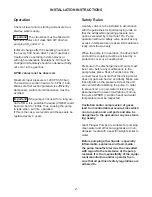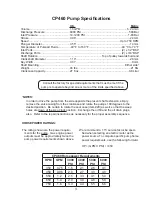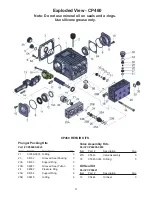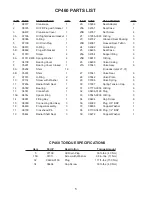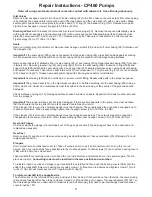
2
INSTALLATION INSTRUCTIONS
Safety Rules
A safety valve is to be installed in accordance
with the guidelines for liquid spraying units so
that the admissible operating pressure can-
not be exceeded by more than 10%. Pump
operation without a safety valve as well as any
excess in temperature or speed limits automat-
ically voids the warranty.
When the pump is in operation, the drive shaft
end and the coupling must be enclosed by a
protective cover or a coupling bell.
Pressure in the discharge line and pump must
be at zero before any maintenance to the
pump takes place. Shut off suction line. Dis-
connect fuses to ensure that the driving motor
does not get switched on accidently. Make sure
that all parts on the pressure side of the unit
are vented before starting the pump. In order
to prevent air, or an air-water mixture being
absorbed and to prevent cavitation occurring,
the pump NPSHR (=suction head) and water
temperature must be respected.
Cavitation and/or compression of gases
lead to uncontrollable pressure-kicks which
can ruin pump and unit parts and also be
dangerous to the operator or anyone stand-
ing nearby.
Giant Plunger Pumps are suitable for pumping
clean water and other non-aggressive or non-
abrasive media with a specific weight similar to
water.
Before pumping other liquids • especially
Inflammable, explosive and toxic media -
the pump manufacturer must be consulted
with regard to the resistance of the pump
material. It is the responsibility of the equip-
ment manufacture and/or operator to en-
sure that all pertinent safety regulations are
adhered to.
Operation
Check oil level prior to starting and ensure trou-
ble-free water supply.
Important!
The crankcase must be filled with
synthetic motor oil of class SAE 0W 40 when
pumping CO
2
under 0° C.
Initial oil change after 50 operating hours and
then every 500 hours, after 1 year if used less.
Caution when operating in damp places or
with high temperature fluctuations. Oil must be
changed immediately should condensate (frothy
oil) occur in the gear box.
NPSH values must be observed.
Maximum input pressure is 1200 PSI (83 bar).
The maximum suction head is 14.5 PSI (1 bar).
Make sure that suction pulsation is sufficiently
dampened - water column resonance must be
avoided.
Important!
If the pump is not used for a long pe-
riod of time, it is possible the seals (23/238) could
become hard or brittle thus causing the pump
to leak when put into operation.
If this is the case, we recommend these seals be
replaced every 4 years.


